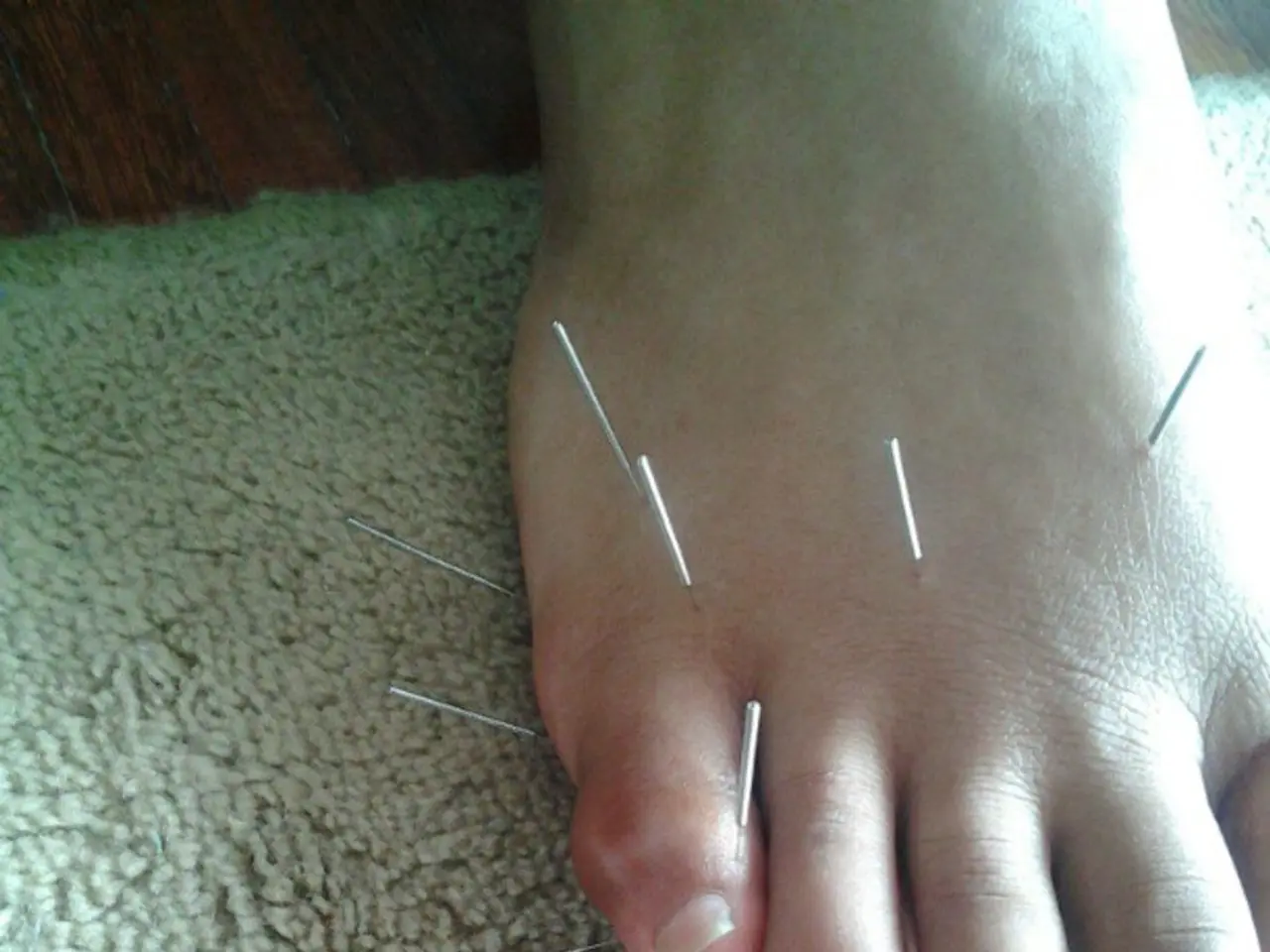Testicular Cancer Screening: Procedures, Self-Checks, and Diagnostic Measures
In the realm of men's health, testicular cancer is a concern for those aged 15 to 45 years old. While the condition is relatively rare, it is essential to understand the available screening methods, their effectiveness, and when to seek professional help.
Screening by Healthcare Providers
Current medical guidelines do not recommend routine screening for testicular cancer in asymptomatic men. This is due to the disease's high cure rate, even when diagnosed after symptoms appear, and the lack of evidence that routine screening improves survival or outcomes. However, if symptoms or risk factors such as a history of cryptorchidism (undescended testicle) or a prior testicular cancer diagnosis arise, healthcare providers may use testicular ultrasonography, other imaging tests, and tumor marker blood tests to diagnose testicular cancer.
Testicular Self-Examination (TSE)
While no national guideline mandates TSE, some organizations recommend men, especially those aged 15 to 35 (the age group most at risk), perform regular or monthly TSE. The aim is increased awareness, enabling earlier diagnosis. However, it is crucial to note that TSE is not a definitive test, and medical evaluation is needed for any suspicious findings.
Pros and Cons of Each Approach
Clinical Screening: Pros include the potential for early detection during exams for other reasons, and definitive diagnosis once suspicious findings arise. Cons include the possibility of unnecessary anxiety or invasive tests if false positives occur, and the cost and resource use not being justified for population screening.
Testicular Self-Examination (TSE): Pros include empowering men to be familiar with their bodies and recognise changes early, being non-invasive, easy, and no cost. Cons include the lack of strong evidence that TSE reduces mortality or improves outcomes, potential for unnecessary medical visits and anxiety due to benign findings, and the possibility of inconsistent performance or misinterpretation.
The High Cure Rate of Testicular Cancer
With a cure rate around 90% and a 5-year survival rate over 95%, the high efficacy of testicular cancer treatment reduces the urgency for population-wide screening, unlike for other cancers where early detection clearly improves outcomes.
When to Seek Medical Help
If abnormalities or symptoms arise, such as a lump, swelling, or pain, prompt evaluation with physical examination, ultrasound, and blood tumor markers by a healthcare provider is standard practice to diagnose and stage testicular cancer. It is also crucial to contact a doctor if showing signs of the disease, as many other conditions have overlapping symptoms with testicular cancer.
If testicular cancer spreads to other locations, it can present with abdominal pain, lower back pain, shortness of breath, coughing or chest pain, and confusion or headaches. Biopsies are typically not used to diagnose testicular cancer due to the risk of spreading cancer to other locations.
In conclusion, while routine medical screening for testicular cancer is not currently recommended for asymptomatic men, testicular self-examination is encouraged as a way to promote awareness. Men should understand that TSE is not a definitive test, and medical evaluation is needed for any suspicious findings. If you experience any concerning symptoms, promptly consult a healthcare provider.
- In the realm of men's health, testicular cancer is a concern for those aged 15 to 45 years old, and understanding the available screening methods and their effectiveness is crucial.
- While clinical screening is not recommended for asymptomatic men due to the high cure rate of testicular cancer, early detection is important, and symptoms or risk factors may warrant medical evaluation.
- Testicular self-examination (TSE) is encouraged in some organizations for men aged 15 to 35, with the aim of increased awareness and early diagnosis.
- TSE is not a definitive test; any suspicious findings require medical evaluation, and there is a lack of strong evidence that TSE reduces mortality or improves outcomes.
- Chronic diseases like cancer, including testicular cancer, require attention to other aspects of health, such as mental health, sexual health, and nutrition, for comprehensive management and well-being.
- Fitness and exercise play a vital role in overall health, particularly in the prevention and management of chronic diseases, but their direct impact on testicular cancer remains unclear.
- Science and medical advancements continue to bolster our understanding of testicular cancer, its screening methods, diagnostic tools, and treatment options, ultimately aiming to improve outcomes while preserving the health and wellness of affected individuals.




